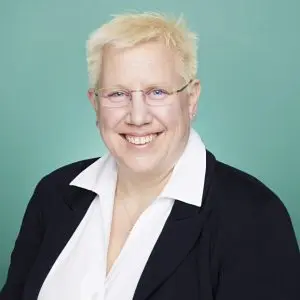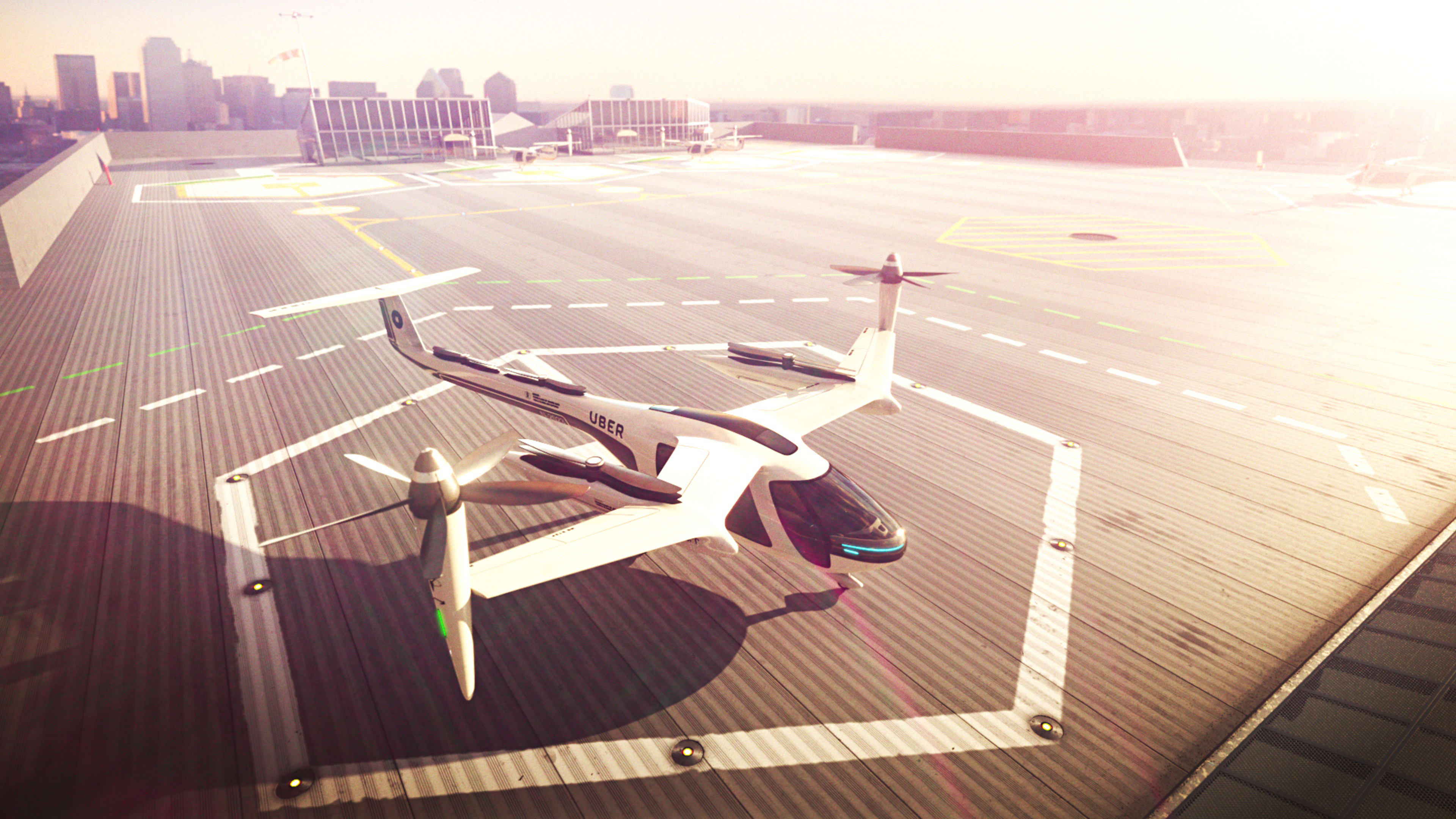Celina Mikolajczak, Uber’s new head of energy storage systems, embodies the same attributes she desires in her products: cool and calm, but packing a lot of power. After over a decade studying what can go wrong with batteries–she literally wrote the book on the topic–she was hired in 2012 by Tesla to make sure none of those problems plagued its power packs. Mikolajczak helped lead the company’s battery development efforts, ensuring that its flagship cars achieve 300 miles per charge.
Then Mikolajczak set her sights even higher. In January, she left Tesla to head up battery development for Uber Elevate, the ride-sharing company’s audacious program to launch an affordable electric sky taxi program by 2023. Partner companies like Bell Helicopter and Embraer will build the actual planes–according to parameters set by Uber (airplanes that take off vertically instead of helicopters, for instance). But Uber will develop the batteries that all the planes use, based on technology for long flights and fast recharges that Mikolajczak’s team is still in the process of inventing.

With short, almost spikey blonde hair, rimless glasses, and bright blue eyes, Mikolajczak is an image of calm at a company that continues to suffer plenty of turmoil. She’s soft spoken, except when she breaks into giggles at my crazy questions–like asking her to summarize major advances in lithium-ion technology over the past two decades. Then she proceeds to answer them. Following are highlights from our conversation at Uber’s San Francisco HQ, edited for publication.
Fast Company: You moved from a pretty high-profile company to another high-profile company. What did Uber do to steal you away?
Celina Mikolajczak: I grew up watching science fiction, and the prospect of flying vehicles is pretty compelling.
FC: What’s your favorite sci-fi?
CM: I grew up watching Star Trek and Battlestar Galactica, Buck Rogers and Star Wars. And then . . . Farscape and Firefly.
FC: How did you get into the battery business?
CM: I did mechanical engineering as an undergrad and combustion and material science as a graduate student. I started in the late ’90s and early 2000s looking at battery safety . . . doing fire investigations that involved lithium-ion batteries.
And right around the time it was getting a little bit boring, Tesla recruited me to lead cell quality. I eventually owned design for manufacturability for the cells, design for reliability and quality. And then I ran a couple of labs, and I also did regulatory work on batteries for Tesla.
Related: Uber’s Flying Taxis Will First Take To The Skies In Dallas-Fort Worth And Dubai
FC: You’ve been in the lithium-ion business almost since the beginning. What’s changed?
CM: There’s been more and more understanding in the industry about what causes failure, more and more iterations on improved manufacturing, things like improved separators that reduce the likelihood that you have a short circuit. And that changed cell designs dramatically back in 2007 and 2008. In the 2000s, if you had 2.2 amp hours in [a laptop battery], that was really high. Now you can get 3.6 amp hours into the same form factor.
FC: Can you give me a sense of how the manufacturing has improved?
CM: If you try to make a lithium-ion cell, what you do is you coat electrodes onto a current collector. Imagine taking a roll of aluminum foil and putting an even layer of pancake mix over the top surface, drying it out, and rolling it up. And you want no wrinkles, no defects, nothing. As you are able to improve that technology, you can get to thinner current collectors, you can get to more even electrodes, you can reduce the defect rate in your electrodes. All of that enhances performance and safety.
FC: The common perception is that lithium-ion batteries are creeping along in capacity, and everyone wants them to jump ahead. They want a Tesla to drive 1,000 miles . . . and recharge in 5 to 10 minutes. When’s the magic coming?
CM: There’s no magic, only physics. Lithium-ion technology was first commercialized in 1993. Over a [25-year] time frame, there were significant changes. I think we’re going to get to a point where the vehicles and the battery technologies will be ready [at] roughly the same time to produce a super-compelling product and a great experience for the public.
FC: For fast charging, do you have a target time you’d like to hit, like 10 minutes? Twenty minutes?
CM: We want to be able to add reasonable amounts of energy to the vehicle in very short loading and unloading times. So if you’re expecting you’ll be able to unload passengers and load new passengers within about five minutes, is [that] going to get you anything? If we can charge the whole battery pack in 15 minutes or 20 minutes, then 5 minutes makes a difference. Five minutes adds appreciable capacity.
Related: Uber’s Robo Air Taxi—Or At Least Part Of It—Debuts at CES
FC: Are there things about battery tech that you feel people don’t understand or get wrong?
CM: Oh yeah! People underestimate just how much energy is sitting in their laptop or their cell phone. And it’s not just, “Oh, I’m going to grab some laptop batteries, wire them up together, stuff them in an airplane, and we’re good to go.” You have to spend a lot of time thinking about how you’re going to design that battery pack for safety.
FC: What does that entail?
CM: I still feel that batteries are more like living things than mechanical pieces. Even though two batteries have the same spec sheet, they can be completely different in how they’re going to perform overall. The quality differences are super important, and how well they’ve been designed, how they degrade, can be very different. The brand-new battery that you put into a vehicle is different than the battery that you take out. It will have evolved. It’ll have aged.
If you put a group of kids together and try to predict how long is each one of them going to live, it’s hard to do, right? With cells, you can’t just say, oh, I’ve picked two cells, they’ve got the same spec. I can predict how they’re going to live, how they’re going to perform. You really have to dig in and understand that specific cell, by that maker, before you can be confident to make those predictions.
FC: Is there a readout on a battery pack to tell you if something’s wrong?
CM: It’s like if you ask me my state of health. I can tell you, well, I might be 20 pounds overweight, I don’t smoke, and I’m just finishing off a cold. But you don’t know anything about my heart condition, my cholesterol, anything else. One readout on a battery tells you one thing, but that battery is a much more complex thing.
FC: Do you have to pull data from batteries periodically?
CM: You can transmit data from the battery pack, whether that’s happening while the aircraft is operating, or you have a once-a-day data dump, or you have a data dump every time you bring it in for a charge. That’s something that Uber is planning to do as part of our aircraft control. We’re pulling data so we know when the different components need maintenance. That can be the battery, but it can also be the motors or other things on the aircraft.
Recognize your brand’s excellence by applying to this year’s Brands That Matter Awards before the early-rate deadline, May 3.
